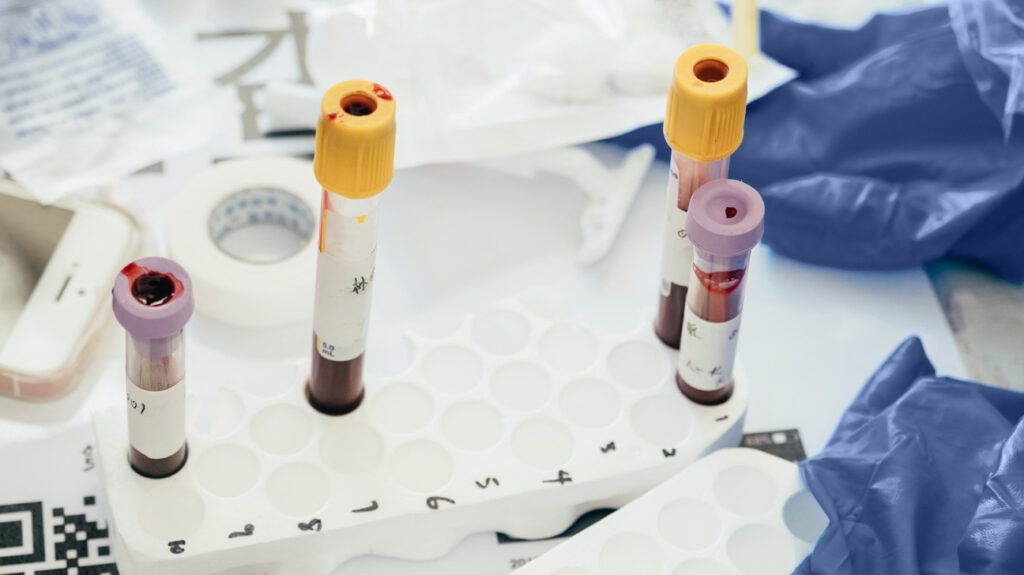Genetic testing for chronic myeloid leukemia (CML) can tell doctors if someone has leukemia, what type they may have, and whether treatment is working.
The tests look for atypical changes in certain genes and chromosomes, mainly the Philadelphia (Ph) chromosome and the BCR-ABL gene.
These tests do not look for genes that increase the risk of getting cancer but for changes that can occur during the leukemia itself. People cannot pass these types of changes to their offspring.
Read on to learn more about genetic tests for CML, including the types doctors use, what the results mean, and more.

Genetic tests can help doctors diagnose and learn more about CML. These tests identify genetic or chromosomal changes that have taken place due to the disease.
Chromosomes are strand-like structures within the nuclei of cells. They contain genes, which consist of DNA, and instruct cells how to grow and function.
Human cells have 23 pairs of chromosomes. CML develops when a change occurs in chromosomes 9 and 22, resulting in the following changes:
BCR-ABL1 gene
The BCR-ABL1 gene is a fusion gene, meaning it consists of two pieces of other genes that have broken off and fused.
The BCR gene comes from chromosome 22, while the ABL1 gene originates from chromosome nine. When they fuse, they cause the body to produce too much tyrosine kinase, which is a protein that makes leukemia cells multiply.
Ph chromosome
The formation of the BCR-ABL1 gene changes chromosome 22, making it shorter. Doctors call this altered version of the chromosome the Philadelphia chromosome, or Ph for short.
Sometimes, doctors also find additional atypical chromosomes during genetic testing for CML.
Doctors can use genetic tests for a range of purposes, such as:
- diagnosing leukemia
- identifying the type of leukemia a person has
- monitoring its progression
- monitoring a person’s response to treatment — if BCR-ABL1 levels decrease, this suggests it is working
Doctors may use different types of genetic tests for different purposes.
There are several types of genetic tests that doctors perform for CML:
Cytogenetic testing
This involves looking at a sample of blood and bone marrow under a microscope. It allows doctors to see the Ph chromosome and any other atypical chromosomes.
This testing method takes some time to produce results, as the best time to observe chromosomal changes is when cells divide. A laboratory has to grow the blood or bone marrow sample to perform the test.
FISH test
Fluorescence in situ hybridization (FISH) tests involve using a dye on cells to highlight specific chromosome or gene changes. This makes it easier to see them under a microscope and means a lab does not need to grow the cells first, making this approach quicker.
Doctors use FISH tests if they suspect someone has the BCR-ABL1 gene. They may also use it if they cannot see the Ph gene via cytogenetic testing but still believe a person has CML.
PCR test
Polymerase chain reaction (PCR) tests can also detect the BCR-ABL1 gene but are more sensitive than the FISH and cytogenetic tests.
This makes this screening useful for monitoring how well leukemia treatment is working, as PCR tests can detect any amount of this gene in a person’s cells, even small amounts.
If BCR-ABL1 gene levels do not decrease during treatment, doctors will know they need to change their approach and find a more effective alternative.
To perform any of the genetic tests for CML, doctors need a sample of blood or bone marrow.
Getting a blood sample involves drawing blood from a vein using a needle. For bone marrow, it involves drawing the sample from inside a bone, usually the hip.
To perform the procedure:
- A health professional will administer a local anesthetic to numb the area and may also provide a sedative.
- A doctor will use a hollow needle to draw out bone marrow.
- After finishing, they will dress the wound and then send the sample to a laboratory.
A person may feel slight pain in their bone for a few days afterward.
CML is
Instead, they look for changes that can emerge
That said, there are other risk factors that increase the risk of this change occurring. They are:
- exposure to radiation
- older age
- sex, as all types of leukemia, including CML, are slightly more common in males
Scientists are not sure why males appear to have a slightly increased risk of CML.
No other factors, including diet, smoking, or exposure to chemicals, have any confirmed association with CML.
Learn more about why CML is not hereditary, including symptoms and treatments.
Genetic testing for chronic myeloid leukemia (CML) can detect whether someone has leukemia, confirm which type of leukemia they have, and monitor responses to CML treatment.
There are two main changes these tests look for: the Philadelphia chromosome and the BCR-ABL1 gene. Different types of tests can look for each of these changes, while some are more sensitive and rapid than others.
People may need to undergo this testing numerous times during treatment to see if their regimen is working.


